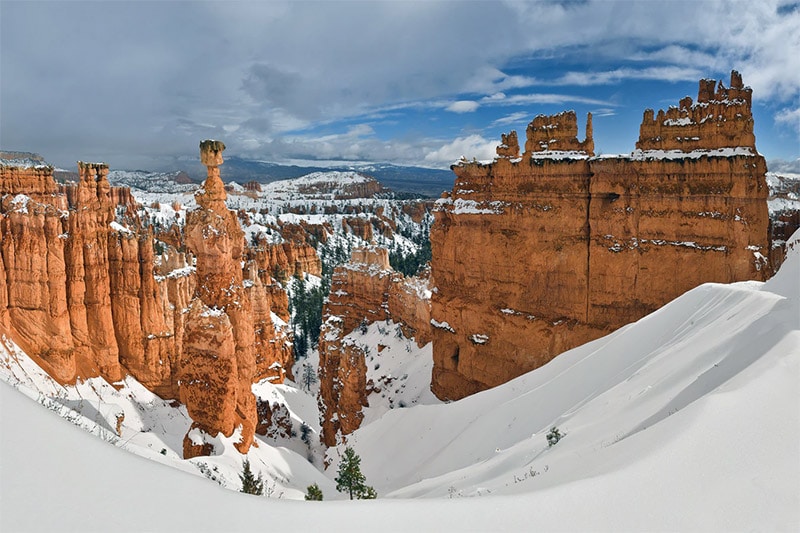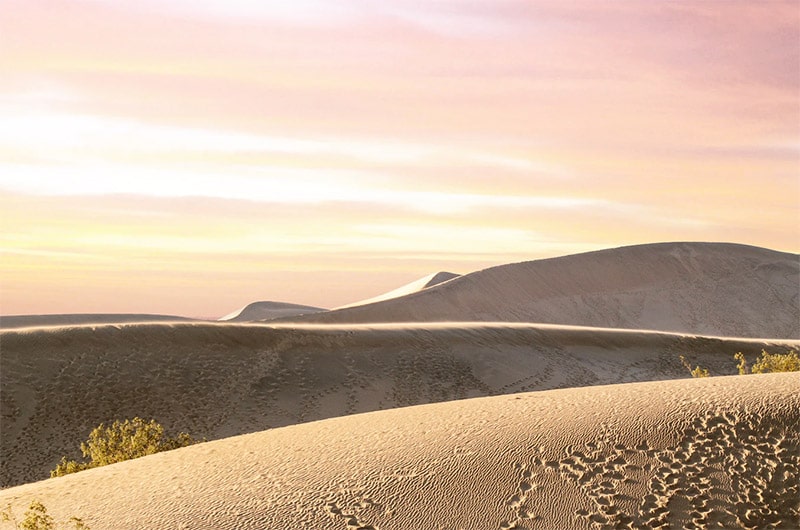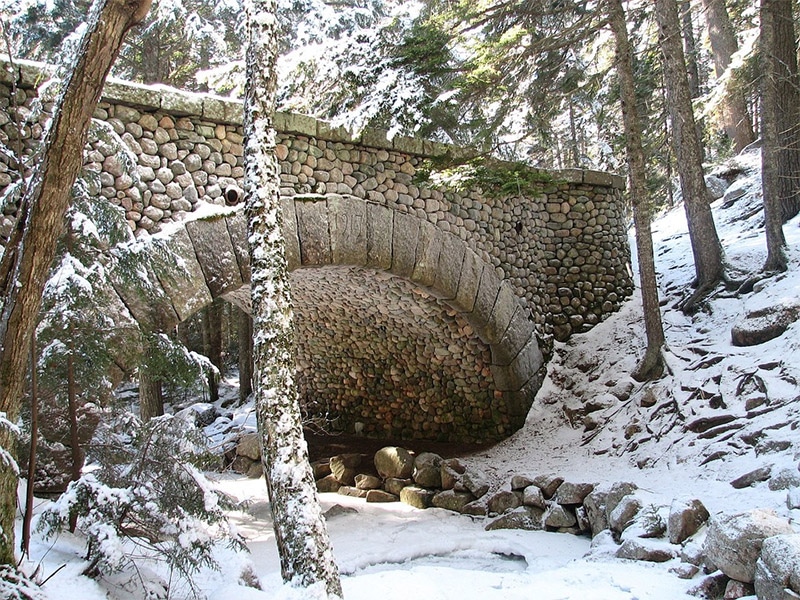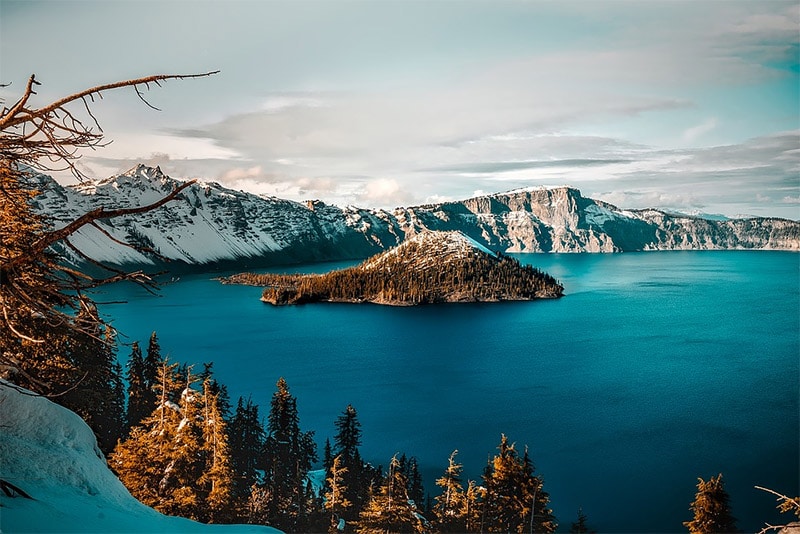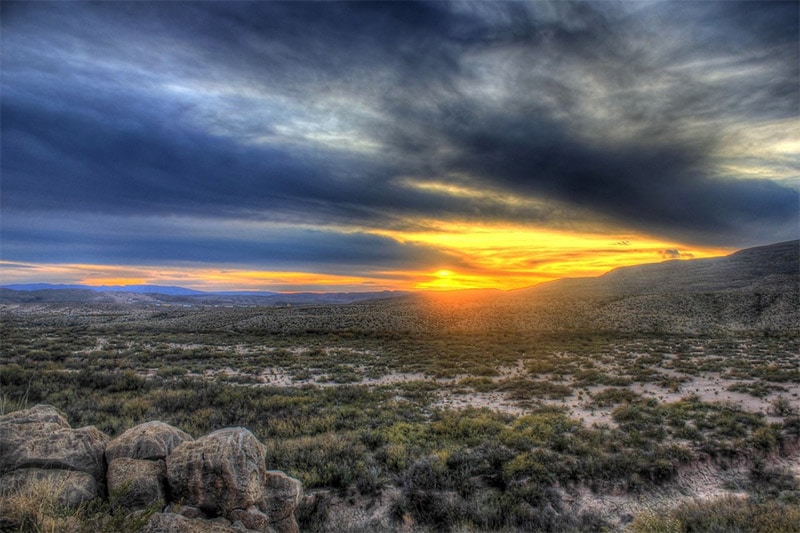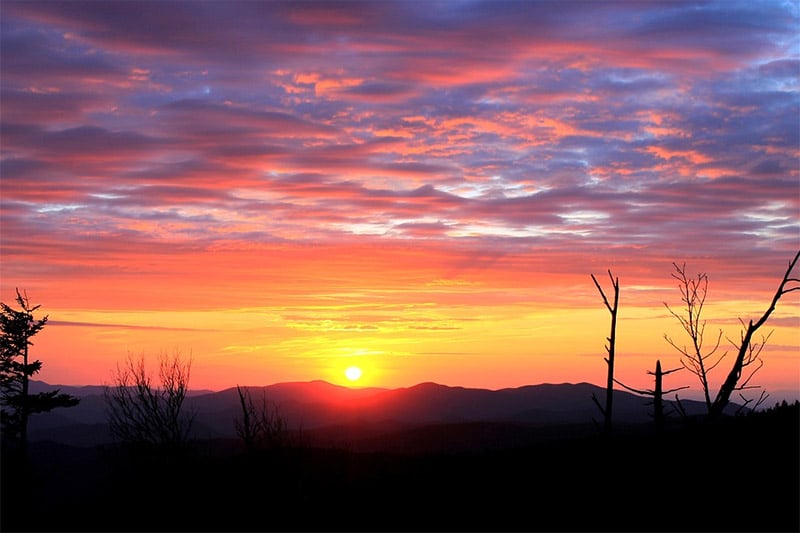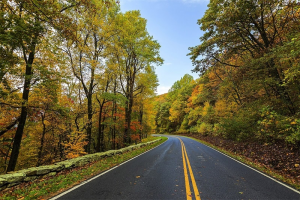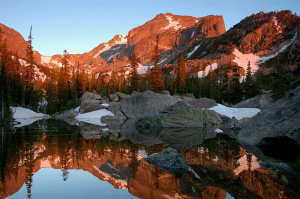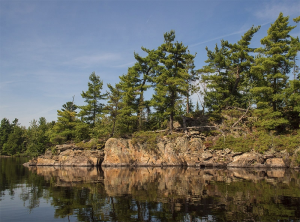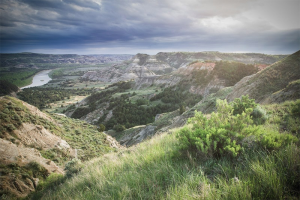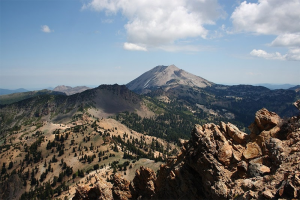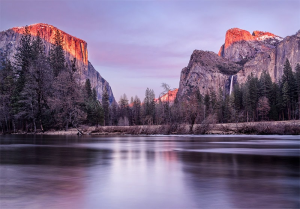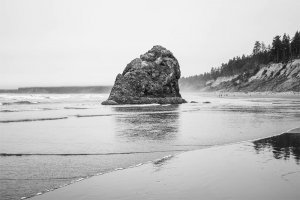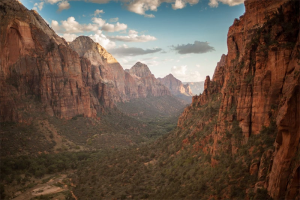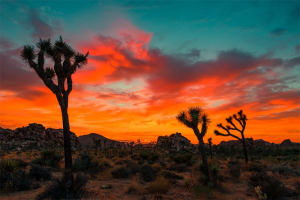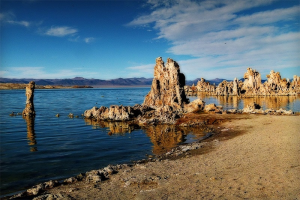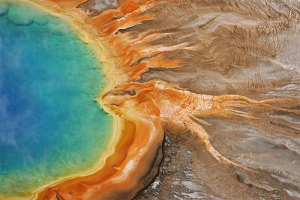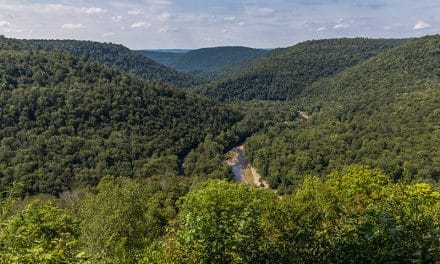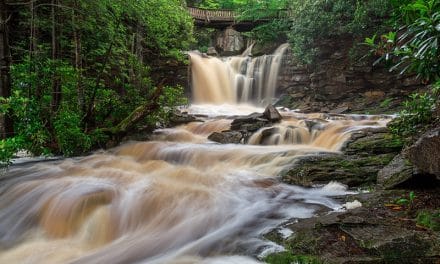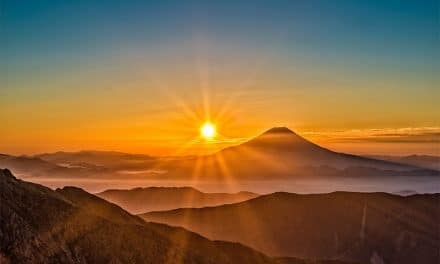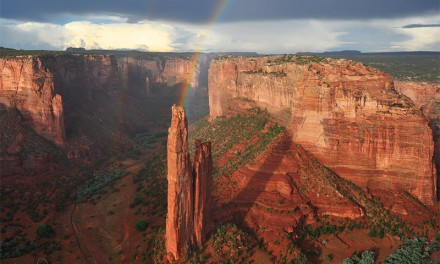Winter is coming! While the colder weather and shorter daylight hours can make it more challenging to get out and photograph, the results of your winter landscape and nature photography can be well worth the effort.
If you’re looking for beautiful places to photograph in the winter, what better choice than a national park? This article will showcase 10 of the best national parks to photograph in the winter.
If you’re looking for some tips to learn how to take better winter photos, please see:
- Tips for Shooting Better in Winter Weather
- Winter Landscape Photography Tips
- 10 Ideas for Winter Landscape Photos
1. Bryce Canyon
Bryce Canyon, one of Utah’s five national parks, is beautiful in any season, but especially in winter. The park is well known for its hoodoos, tall rock spires. The red and orange rock formations are stunning with snow to provide some contrast.
The park is open year-round. Roads may close at times during and after snowstorms, but once they are plowed and safe for travel, the roads re-open.
Bryce Amphitheater, which is filled with hoodoos, is the most popular part of the park. There are four main viewpoints, all within a few miles of each other along the main road that runs for 18 miles through the park.
2. Death Valley
The main reason that makes winter a great time to visit Death Valley is the temperature. The park lies on the California and Nevada border and is the hottest, driest, and lowest of all the national parks. With extreme temperatures in the summer, many visitors would prefer the cooler temperatures of winter.
The snowcapped peaks and beautiful winter light make Death Valley a wonderful place to visit and photograph in the winter. Also, the time between Thanksgiving and Christmas is the least crowded of any time throughout the year.
3. Yosemite
Yosemite National Park is a favorite for many photographers at any time of the year. Located in central California, Yosemite is home to stunning granite cliffs, mountains, lakes, waterfalls, and wilderness.
Most of the park’s visitors spend the vast majority of their time in the Yosemite Valley, which is open year-round. Certain roads within the park close during the winter, but with Yosemite Valley being accessible, there is plenty to see and photograph. Some trails are open in the winter and others will close due to weather.
At times, tire chains may be required on park roads, so be sure to be prepared.
4. Grand Canyon
The Grand Canyon is, of course, one of the most popular and well-known national parks. The park includes areas along both the north rim and south rim of the canyon. The south rim is the more popular area, partly because the north rim is closed from December through May due to snow and winter weather.
The south rim is open year-round with most services being available during winter months, but some facilities may be closed.
While the Grand Canyon is beautiful throughout the year, but there is something extra special about being able to see and photograph the rugged landscape with snow. And with the park being so popular, spring, summer, and fall can bring pretty large crowds that make it a challenge to photograph from the popular viewpoints.
To plan your trip, be sure to read out guide to photographing the Grand Canyon.
5. Acadia
Located in Maine, Acadia National Park is one of the most popular parks on the east coast. Maine winters usually bring plenty of cold weather and snow, which provides plenty of opportunities for photographers who are willing to embrace the elements.
The downside to visiting Acadia in the winter is that much of the park is closed. Park Loop Road is the main road within the park, and much of it is closed during the winter. The Ocean Drive section, one of the most scenic parts of Park Loop Road, is open year-round.
Even with the closures, there is still plenty to see and photograph during the winter.
Please see our guide to photographing Acadia National Park for more details.
6. Crater Lake
Located in southern Oregon, Crater Lake National Park receives a significant amount of snow each year. In fact, it is one of the snowiest inhabited places in the U.S. The extreme snowfall means that Rim Drive, which surrounds the lake, is closed for much of the year. It is closed from October or November through May or June.
While it is closed to cars, you can use a snowmobile to get around during winter.
Despite Rim Drive being inaccessible to cars in the winter, other parts of the park are accessible year-round. This means that you can certainly visit the park during the winter, you’ll just need to be prepared.
7. Arches
Arches National Park is located in Moab, Utah, about 250 miles northeast of Bryce Canyon. This park is, of course, famous for the natural arches that are found within the park. The arches and rock formations look beautiful at any time of the year, but especially in the winter when snow is involved.
The park is open year-round, and if you visit during the winter you will benefit from smaller crowds. You’ll also avoid the extremely hot temperatures of the summer. There are typically no closures to the park, so access isn’t extremely difficult during the winter.
8. Big Bend
Big Bend National Park doesn’t get as much attention as some other national parks, but that is mostly due to its remote location in western Texas along the Mexican border. Big Bend has plenty to offer, especially for those who love rugged, open spaces.
Visiting Big Bend in the winter allows you to avoid the heat of the summer months. Because the park varies in elevation from about 1,800 feet to 7,000+ feet, the temperatures can also vary significantly.
In general, winter months are typically mild but can get colder.
9. Great Smoky Mountains
Great Smoky Mountains National Park in Tennessee and North Carolina hosts more visitors each year than any other national park. This park has plenty to offer in any season. During the winter you’ll find beautiful snow-covered mountains and trees that are perfect for photography.
Most of the park and roads will be open year-round, although there may be some temporary closures due to snow and ice. However, Clingmans Dome Road, which provides access to the highest peak in the park, is closed all winter. The Roaring Fork Motor Nature Trail is another popular road that is not accessible during the winter.
For planning, please see our guide to photographing Great Smoky Mountains National Park.
10. Yellowstone
Yellowstone is one of the most popular national parks, but if you visit during winter months, you will be able to get a much different experience and get away from the crowds. Getting around Yellowstone in the winter requires a bit more effort, but the results can be worth it.
Most of the roads within the park are closed from November through April or May, but you can still access many points of interest by snowmobile or snow coach. Guided tours are available and getting around is possible, even if it isn’t always convenient.
Other notable parks to consider:
Shenandoah
Shenandoah National Park in Virginia is another mountain park in the eastern part of the U.S. that is spectacular in the fall. The Blue Ridge Parkway connects Shenandoah National Park to Great Smoky Mountains National Park and provides plenty of scenic mountain views in between.
For those in the Washington, DC area, Shenandoah National Park is easy to access with less than a 2-hour drive. Skyline Drive is the main point of interest within the park, providing more than 100 scenic overlooks and access to many hiking trails.
If you want some easy photos without the need to hike, Skyline Drive is the perfect solution.
If you’re up for some challenging hikes in the mountains, there are plenty of options that you will love. The White Oak Canyon Trail and Dark Hollow Falls Trail are among the favorites.
Shenandoah is also known for wildlife. You’re likely to see deer, black bear, and other species just by driving through the park.
Now that we’ve covered these tips, you should be ready for a great trip! One final tip is to remember to have extra batteries, chargers, and memory cards. A car charger adapter can be a great item to have with you.
For more details, see The Photography Guide to Shenandoah National Park.
Rocky Mountains
Northwest of Denver, Rocky Mountain National Park is another incredible location for fall foliage. The aspens turn golden as early as late August and typically peak in September. Like Grand Teton, this is another park with stunning color, mountain views, and lakes and ponds.
In addition to the mountains and foliage, fall is also a great time to see and photograph wildlife within the park. Elks are very active and you’re likely to hear their bugle-like mating calls. You may also spot bighorn sheep.
Voyageurs National Park
Voyageurs National Park is located in northern Minnesota, near the Canadian border. The main reason this park does not attract more visitors is that much of the park is accessible only by boat. Many visitors use kayaks or canoes to explore the lakes of the park, and guided boat tours are also available.
Those who are willing to make the effort are rewarded with views of tall bluffs and beautiful lake shores.
Theodore Roosevelt National Park
Theodore Roosevelt National Park in North Dakota is one of the more popular parks on this list (in terms of the number of annual visitors), but it is still not that well known or recognized in photos. This rugged badlands landscape is somewhat similar to what you would find at Badlands National Park in South Dakota. Theodore Roosevelt National Park consists of 3 separate units and is easier to access than the other parks mentioned so far.
Both the north and south units have scenic drives with overlooks that provide easy views of the landscape.
Lassen Volcanic National Park
Lassen Volcanic National Park in northeastern California is home to Lassen Peak, the largest plug dome volcano in the world. Here you can find beautiful mountains, lakes, and wildflowers to photograph. The 30-mile Lassen Volcanic National Park Highway provides easy access to a lot of great views.
The park is also known for its dark night skies, making it ideal for stargazing and night photography.
Tips for Photographing National Parks
National Parks are not only popular with tourists, but they’re also among the best locations for landscape photographers. Our national parks are filled with plenty of natural beauty, but if you want to come away with the best photos, you need to be prepared.
→ Related reading: 7 Sites and Apps for Researching and Scouting Photography Locations
1. Plan Ahead
In order to get the most out of your time photographing a national park, it is critical that you plan ahead. Planning is an important part of any landscape/travel photography trip, but it’s especially important when you’re headed to a national park. Here are a few reasons why:
- Most national parks are BIG. Getting from one location to another can take a few hours and may not even be that easy.
- Because the parks are so big, you can easily miss out on some of the best locations if you don’t plan.
- You won’t be able to drive to every location that you want to photograph. You’ll need to know how to get to the places you want to photograph.
- Planning will help you to prioritize so you get to see and photograph the things that are most important to you.
- National parks tend to draw a crowd. Planning can help you to avoid the worst crowds, or at least minimize their impact on your work.
2. Consider Seasons and Weather
When you’re planning your trip, seasons and weather should play a big role in when you go. If you’re traveling with family you may not have as many options, but if you have some flexibility with your schedule, make sure that you are going during an optimal time.
Of course, each park will be different, so research things like the average temperature and typical weather at different times of the year. Also, consider what you want to photograph and the seasonal highlights of the park throughout the year.
Aside from just the weather, timing will have a big impact on the crowds as well. Most parks tend to have the biggest crowds in the summer, so you may want to keep that in mind.
Some parks will also have limited windows for certain locations or activities. For example, Going-to-the-Sun Road in Glacier National Park is only open part of the year due to snow. The dates depend on the weather, but it may not open until late June and it typically closes in October.
3. Capture the Iconic Shots
Most national parks have a few locations or views that are very recognizable. As a photographer, you’re probably more interested in coming away with photos that are original and unique but don’t disregard the iconic shots.
If you sell prints or license your photos, many people will be interested in the iconic shots, so it’s a good business move to go ahead and capture them for yourself.
4. Get Off the Beaten Path
Although it’s a good idea to get the iconic shots, don’t stop there! The majority of national park visitors stick to the locations and views that are easy and convenient. Roadside overlooks, prominent locations with plenty of parking, and the most well-known spots in the park that can be easily reached.
Some visitors are in a hurry and don’t have time for anything else. Others aren’t able to hike or travel to harder-to-reach places. Some visitors simply don’t know about other spots in the park. And some don’t want to go to the trouble of getting to other locations.
If you want to come away with unique photos and get the most out of your trip, you’ll need to get off the beaten path. This usually involves hiking, and thankfully, most national parks have plenty of trails that are well marked and well maintained.
With a little bit of effort, you can get views that most tourists will not see. For example, at the Grand Canyon, you can hike to the bottom of the canyon. The views along the trail or at the bottom give you a different perspective than most travelers see at the popular viewpoints from the rim.
Another option is simply to walk along the rim or the roads and explore a little. Instead of taking the shuttle bus, you can walk from one viewpoint to the next and you’ll find some opportunities for great shots along the way.
→ Related reading: How to Photograph Iconic Locations Without Being Cliché
5. Research Sunrise and Sunset Locations Ahead of Time
When you are planning your trip, make sure that you are researching the best spots in the park for sunrise and sunset. These golden hours and blue hours are generally the best time for landscape photography, so you’ll want to make the most of each sunrise and sunset.
All of our national park location guides include information about recommended spots and views for sunrise and sunset. The last thing you want is to be scrambling to find a good view before the day’s best light is available.
Be sure that you are close enough to your preferred spot to get there in time for the best light.
6. Have a Method of Tracking Your Photos
When you get home from your trip to a national park, you’ll probably have hundreds or thousands of photos. You may not remember where every photograph was taken, and even if you do remember right now, you’re bound to forget some of those details over a period of time.
When I’m headed to a national park or some other destination where I’ll take a lot of photos, I turn on the GPS tracking on my camera. If your camera has this functionality, it’s an awesome feature. You can easily find the exact location a photo was taken if it is tagged with GPS coordinates.
If your camera does not have GPS tracking, you should come up with some way to record the general location of the photos that you’re taking. You could use a notebook and simply record the ranges of file numbers of the photos you take at different places in the park. For example, you could write that photos from one file number to another were taken along a certain trail.
At some point, you’ll probably be interested in knowing where a particular photo was taken.
7. Sleep in the Park, or as Close as Possible
Because the parks are so big, it’s best to stay overnight inside the park, or as close to an entrance as possible. Some parks have cabins or other rooms available for rent, and almost all parks have campgrounds. If that is not an option, book a place to stay close to an entrance.
Since you’ll want to make the most of each sunrise and sunset, it can mean very early mornings, and in some cases, late nights. Even if you are staying inside the park, getting to your preferred spot for sunrise can take some time. The longer a drive or hike you have, the earlier you will need to get up.
When I visited Acadia National Park in June of 2017 and the sunrise was around 4:40 am, I was glad I stayed near the entrance to the park. I was getting up between 3:00 – 3:30 every morning, depending on where I wanted to be for sunrise. It would have been even earlier if I wasn’t as close to the park.
8. Be Sure to Check the Surrounding Areas
National parks are filled with beautiful landscapes, but the beauty doesn’t end at the boundaries of the park. Many national parks are surrounded by other points of interest that you may want to visit on the same trip. Here are a few examples:
- Mono Lake is near Yosemite National Park
- Big Cypress National Preserve is next to Everglades National Park
- Horseshoe Bend is not too far from the Grand Canyon
These are just a few examples. Regardless of what park you are visiting, be sure to research the surrounding areas so you don’t miss out.
9. Use Batch Processing
Since you’ll be taking so many photos, processing those photos can be a time-consuming task. The best way to save time is to use batch processing. Lightroom offers a few options for processing multiple photos at once.
Another way to speed up your photo editing is to apply a preset to multiple photos. This could be a preset that you create, or it could be a preset that you’ve purchased. Our Landscape Legend Lightroom Presets come with a guide to batch processing that can help to save many hours of work on the computer.
10. Be Respectful
While you are visiting the national park, be sure to respect the other visitors as well as nature. Be courteous to tourists and photographers that you come across.
Respecting and taking care of the nature of our parks is also a big issue. There have been incidents at many parks, but issues at some parks like Yellowstone and Death Valley have received a lot of attention. Don’t do anything that will damage nature or interfere with wildlife.
Now that we’ve covered these tips, you should be ready for a great trip! One final tip is to remember to have extra batteries, chargers, and memory cards. A car charger adapter can be a great item to have with you.
Photo license links: Pixabay, Unsplash, CC0, CC BY-SA 2.0, CC BY 2.0, CC BY 3.0, CC BY-ND 2.0


